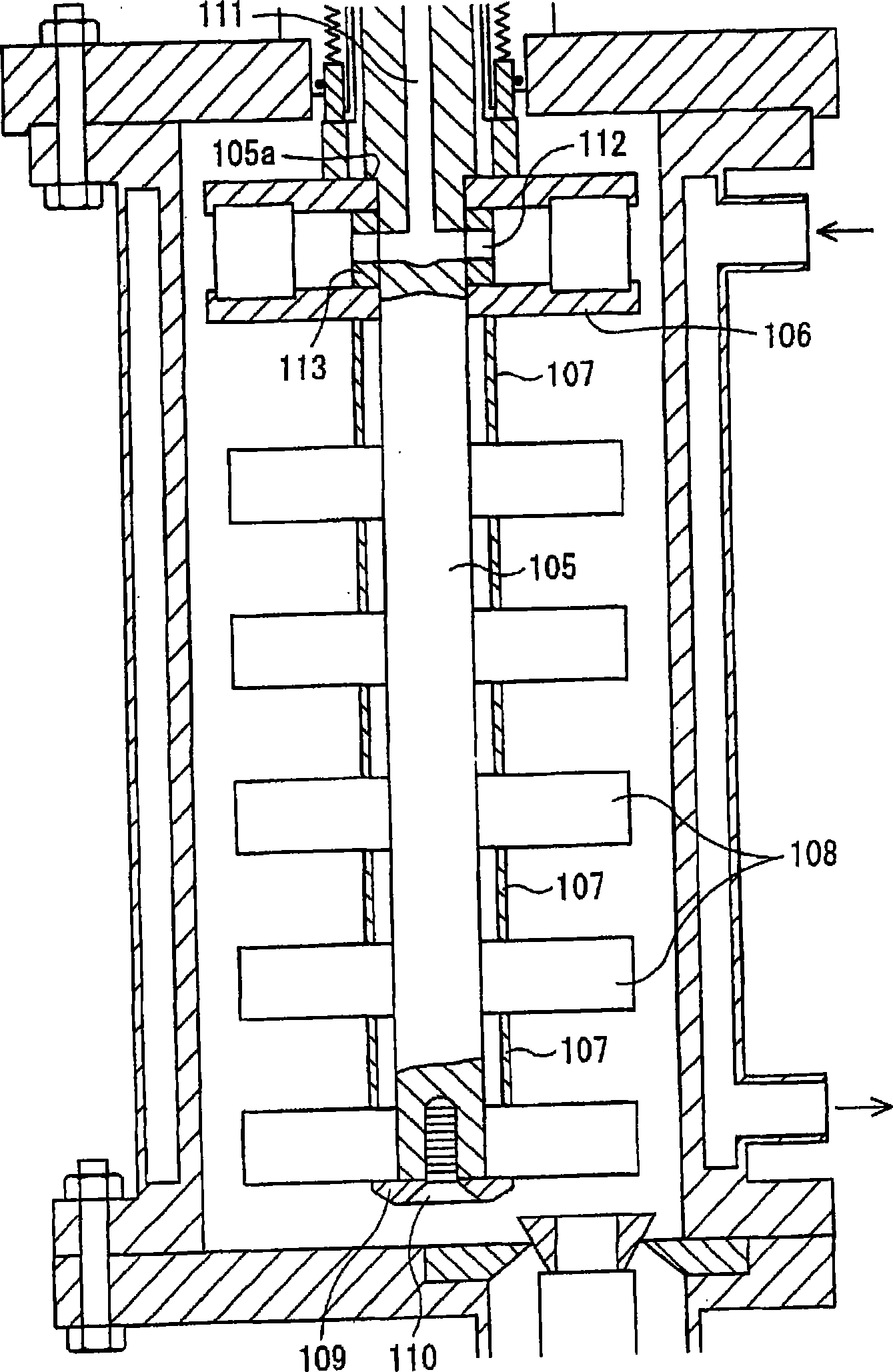Electrographic photoreceptor, image forming apparatus, and electrographic cartridge
一种电子照相、感光体的技术,应用在光学、电记录术、仪器等方向,能够解决模糊、不能充分满足其要求、带电性降低等问题,达到电学特性优异的效果
- Summary
- Abstract
- Description
- Claims
- Application Information
AI Technical Summary
Problems solved by technology
Method used
Image
Examples
Embodiment
[0566] Hereinafter, the present invention will be described more specifically by giving examples and comparative examples, but the present invention is not limited thereto as long as the present invention does not deviate from the gist thereof. In addition, in description of an Example, "part" means a "weight part" unless otherwise stated.
[0567] [Example Group 1]
[0568] [Manufacture of oxytitanium phthalocyanine]
manufacture example 1-1
[0570] Under a nitrogen atmosphere, 66.6 g of phthalonitrile was suspended in 353 mL of diphenylmethane, and a mixed solution of 15.0 g of titanium tetrachloride and 25 mL of diphenylmethane was added at 40°C. After raising the temperature to 205-210°C in about 1 hour, a mixed solution of 10.0 g of titanium tetrachloride and 16 mL of diphenylmethane was added dropwise, and the mixture was reacted at 205-210°C for 5 hours. The product was heated and filtered at 130 to 140° C., and washed with N-methylpyrrolidone (hereinafter referred to as “NMP” as appropriate) and n-butanol in this order. Next, after heating to reflux in 600 mL of n-butanol, NMP, water, and methanol were suspended and washed, and dried to obtain 47.0 g of B-type oxytitanium phthalocyanine.
[0571] With 20.0g of this type B oxytitanium phthalocyanine and 120mL glass beads ( 1.0mm~ 1.4 mm) together with a paint shaker for 25 hours, elute oxytitanium phthalocyanine with methanol, and obtain amorphous oxytita...
manufacture example 1-2
[0575] Under a nitrogen atmosphere, 66.6 g of phthalonitrile was dissolved in 436 mL of 1-chloronaphthalene, and a mixture of 25.0 g of titanium tetrachloride and 21 mL of 1-chloronaphthalene was added dropwise at 200°C. After reacting at 205-210°C for 5 hours, the product was heated and filtered at 130-140°C. Next, it was heated to reflux in 580 mL of n-butanol, then suspended and washed with water, NMP, and methanol, and dried to obtain 48.7 g of B-type oxytitanium phthalocyanine.
[0576] With 30.0g of this type B oxytitanium phthalocyanine and 200mL glass beads ( 1.0mm~ 1.4 mm) together with a paint shaker for 20 hours, then elute oxytitanium phthalocyanine with methanol, and obtain amorphous oxytitanium phthalocyanine after filtration. After suspending this oxytitanium phthalocyanine in 625 mL of water, add 48 mL of o-dichlorobenzene, stir at room temperature for 1 hour, discard the water by decantation, carry out suspension washing with methanol, filter and dry, and ...
PUM
| Property | Measurement | Unit |
|---|---|---|
| particle diameter | aaaaa | aaaaa |
| particle diameter | aaaaa | aaaaa |
| current density | aaaaa | aaaaa |
Abstract
Description
Claims
Application Information
 Login to View More
Login to View More - Generate Ideas
- Intellectual Property
- Life Sciences
- Materials
- Tech Scout
- Unparalleled Data Quality
- Higher Quality Content
- 60% Fewer Hallucinations
Browse by: Latest US Patents, China's latest patents, Technical Efficacy Thesaurus, Application Domain, Technology Topic, Popular Technical Reports.
© 2025 PatSnap. All rights reserved.Legal|Privacy policy|Modern Slavery Act Transparency Statement|Sitemap|About US| Contact US: help@patsnap.com



